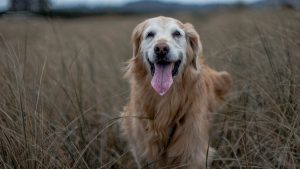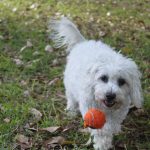Livestock Guardian Dogs (LGDs) are a distinct group of working dogs bred and raised to protect livestock from predators and other threats. Unlike regular companion dogs, LGDs are deeply rooted in ancient pastoral traditions and have been vital partners to farmers and shepherds for thousands of years. Their loyalty, courage, and natural guarding instincts make them indispensable protectors of flocks and herds worldwide.
These dogs are not just pets; they are partners in protection. With the right upbringing and training, LGDs form an unbreakable bond with the animals they guard, staying alert and calm while deterring predators with confidence and authority.
Some of the most popular LGDs are the Maremma Sheepdog, the Great Pyrenees, the Anatolian Shepherd, the Komondor, and the Akbash.
In this article, you’ll explore how these special dogs help keep livestock safe from dangers. You’ll learn about their history, various breeds, and what makes them so important on farms and for herding purposes. In fact, their presence is more than just friendship; it creates a powerful teamwork between nature’s watchful protectors and the people they guard.
It is always recommended to get a trained puppy/dog from a well-reputed breeder that specializes in breeding Livestock Guardian Dogs. These dogs are different than other dogs and need to be raised in a specific environment which is a crucial part of their training.
Table of Contents
History of Livestock Guardian Dogs
The use of livestock guardian dogs (LGDs) is deeply intertwined with the development of animal husbandry and the protection of domesticated animals from predators. These working dogs have been assisting farmers for thousands of years, serving as steady protectors of flocks and herds.
Evidence shows that LGDs were employed as early as ancient Mesopotamia and other Near-Eastern regions, where shepherds kept dogs to guard sheep, goats and other livestock from wolves and bears.
Over time, the practice spread through the Roman Empire and into medieval Europe, where different regions developed their own LGD breeds adapted to local terrain and predator threats.
Today, these dogs work on farms and ranches around the world, performing the same core mission of safeguarding livestock, and doing so in everything from mountainous uplands to open pastures and changing climates.
Throughout history, the partnership between humans and LGDs has been a compelling example of mutual benefit: people provide livestock and environment, and the dogs provide protection, vigilance and companionship. These breeds were selected over generations for traits such as calmness around animals, independent judgement and protective instinct, and they continue fulfilling that role today.
The Importance of Livestock Guardian Dogs
Livestock Guardian Dogs (LGDs) play a crucial role in the protection and well-being of livestock in various agricultural and pastoral settings.
Here are some key aspects highlighting the importance of Livestock Guardian Dogs:
Predator Deterrence and Protecting Livestock:
LGDs are specifically bred and trained to deter predators, such as wolves, coyotes, bears, and big cats, from attacking and preying on livestock. Their mere presence can discourage potential threats.
Reducing Livestock Losses:
The primary function of LGDs is to reduce or eliminate losses of livestock due to predation. By patrolling and guarding the herd, they create a protective barrier that discourages predators from approaching.
Non-Lethal Predator Control:
LGDs provide a non-lethal alternative to predator control. Instead of resorting to lethal methods like trapping or shooting predators, which can disrupt ecosystems and cause imbalances, LGDs offer a more sustainable approach.
24/7 Protection:
LGDs are known for their vigilance and ability to work day and night. Their constant presence ensures that the herd is protected around the clock, even when human supervision is limited.
Versatility Across Livestock:
LGDs are versatile and can adapt to various types of livestock, including sheep, goats, cattle, and poultry. Different breeds may be selected based on the specific needs of the livestock they are guarding.
Preserving Traditional Farming Practices:
The use of LGDs allows farmers and pastoralists to continue traditional and sustainable farming practices without resorting to intensive predator control methods that may harm ecosystems.
Guardianship Beyond Fencing:
While fences are essential, LGDs provide an additional layer of protection beyond physical barriers. They can actively patrol larger areas and respond to potential threats in ways that static fencing cannot.
Fostering Human-Animal Bond:
LGDs often form strong bonds with the livestock they protect. This bond contributes to unity within the herd and reinforces the connection between humans and their animals.
So, undoubtedly, Livestock Guardian Dogs play a vital role in sustainable agriculture, predator control, and the preservation of traditional farming practices, contributing to the overall well-being of both livestock and farmers.
Breeds that Make Ideal Livestock Guardian Dogs:

Several breeds are known for their exceptional qualities as Livestock Guardian Dogs (LGDs), displaying traits such as loyalty, courage, and a strong protective instinct. While individual dogs may vary, the following breeds are commonly recognized for their effectiveness in safeguarding livestock:
Great Pyrenees:
Hailing from the Pyrenees Mountains, these majestic dogs are gentle giants with a calm demeanor. Great Pyrenees are renowned for their effectiveness in guarding sheep and other livestock.
Anatolian Shepherd Dog:
Anatolian Shepherds are large, powerful dogs known for their independence and resilience. They are particularly adept at protecting livestock in various terrains.
Armenian Gampr:
The Armenian Gamprs are one of the world’s oldest livestock guardian breeds, developed over thousands of years in the mountainous regions of Armenia. Historically, these dogs have been bred specifically to protect sheep, goats, and cattle from predators such as wolves, bears, and thieves.
Komondor:
With a distinctive corded coat, the Komondor is a Hungarian breed known for its fearlessness and strong protective instincts. They are particularly well-suited for guarding sheep.
Maremma Sheepdog:
Maremma Sheepdogs are known for their agility and intelligence. Originating in Italy, they have been successfully used to protect livestock, especially sheep, from predators.
Kangal:
Kangals are powerful and agile dogs. These Turkish dogs are highly regarded for their protective nature and are often used to guard livestock, especially sheep.
Caucasian Shepherd Dog:
These large and strong dogs have a natural instinct to protect. They are commonly used to guard livestock against predators.
Spanish Mastiff:
The Spanish Mastiff is yet another gentle giant with a calm demeanor. They are known for their effectiveness in guarding livestock, particularly sheep.
Akbash:
Akbash dogs are characterized by their white coats and agility. They are known for their ability to protect livestock, especially against large predators.
Sarplaninac:
A breed from the Balkans, Sarplaninacs are known for their independence and protective instincts. They have traditionally been used to guard livestock in challenging environments.
Polish Tatra Sheepdog (Tatra Mountain Sheepdog):
This dog breed is well-adapted to mountainous terrain and harsh weather conditions. They are known for their loyalty and effectiveness in protecting sheep.
When selecting a Livestock Guardian Dog, it’s essential to consider factors such as the specific needs of the livestock, the environment, and the type of predators in the area. Additionally, proper training and socialization are crucial to ensure that these guardian dogs effectively fulfill their protective roles while maintaining a balanced temperament.
Conclusion:
Livestock Guardian Dogs stand as stalwart protectors, forging an unbreakable bond with the rural communities they serve. Their strong loyalty, bravery, and natural protective instincts make Livestock Guardian Dogs essential partners in farming and herding.
Each breed, from the powerful Anatolian Shepherd to the gentle Great Pyrenees, contributes unique strengths to the overall fabric of livestock protection. As these guardians watch over flocks and herds, their stories become woven into the history of the lands they protect.










